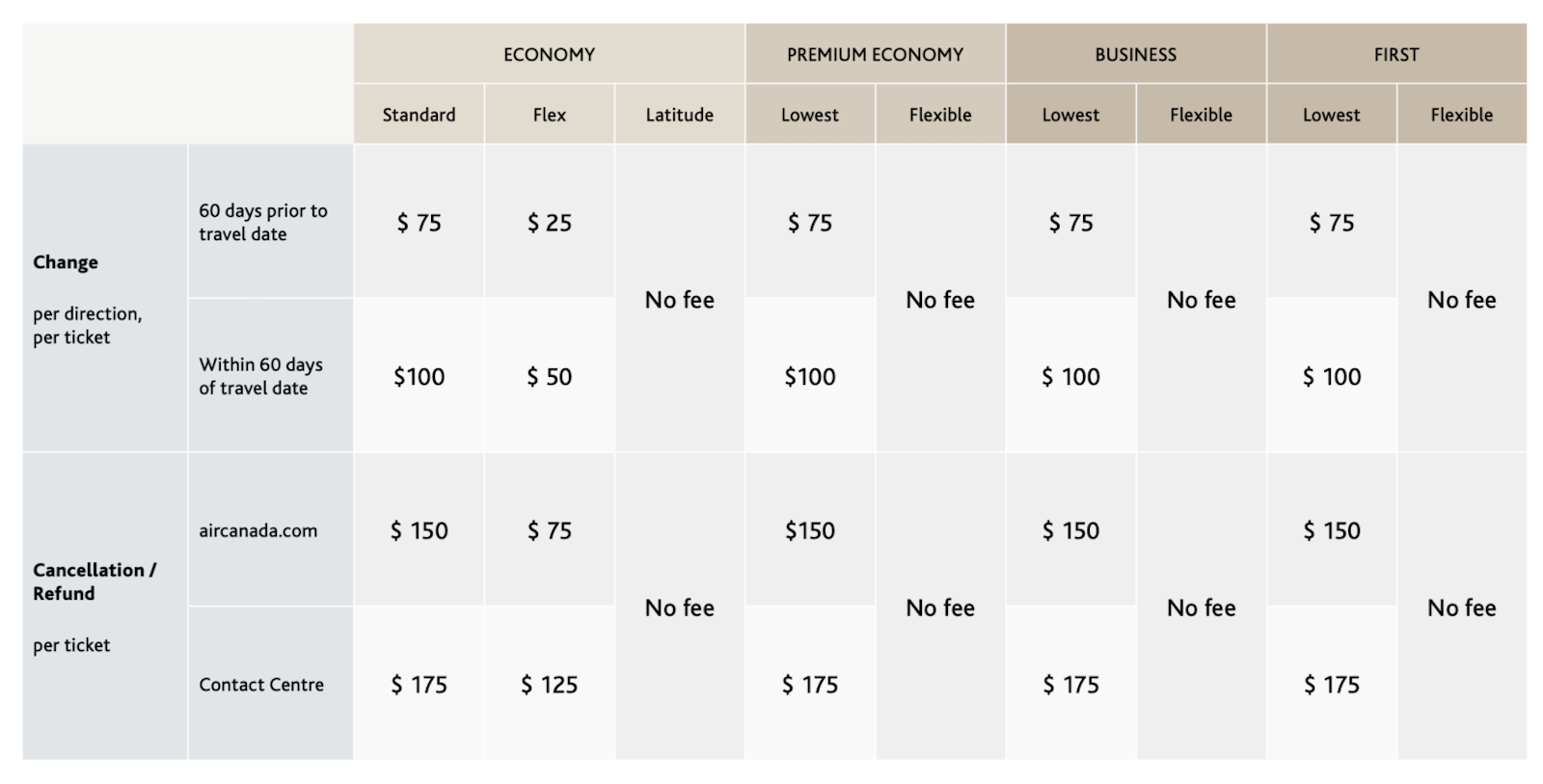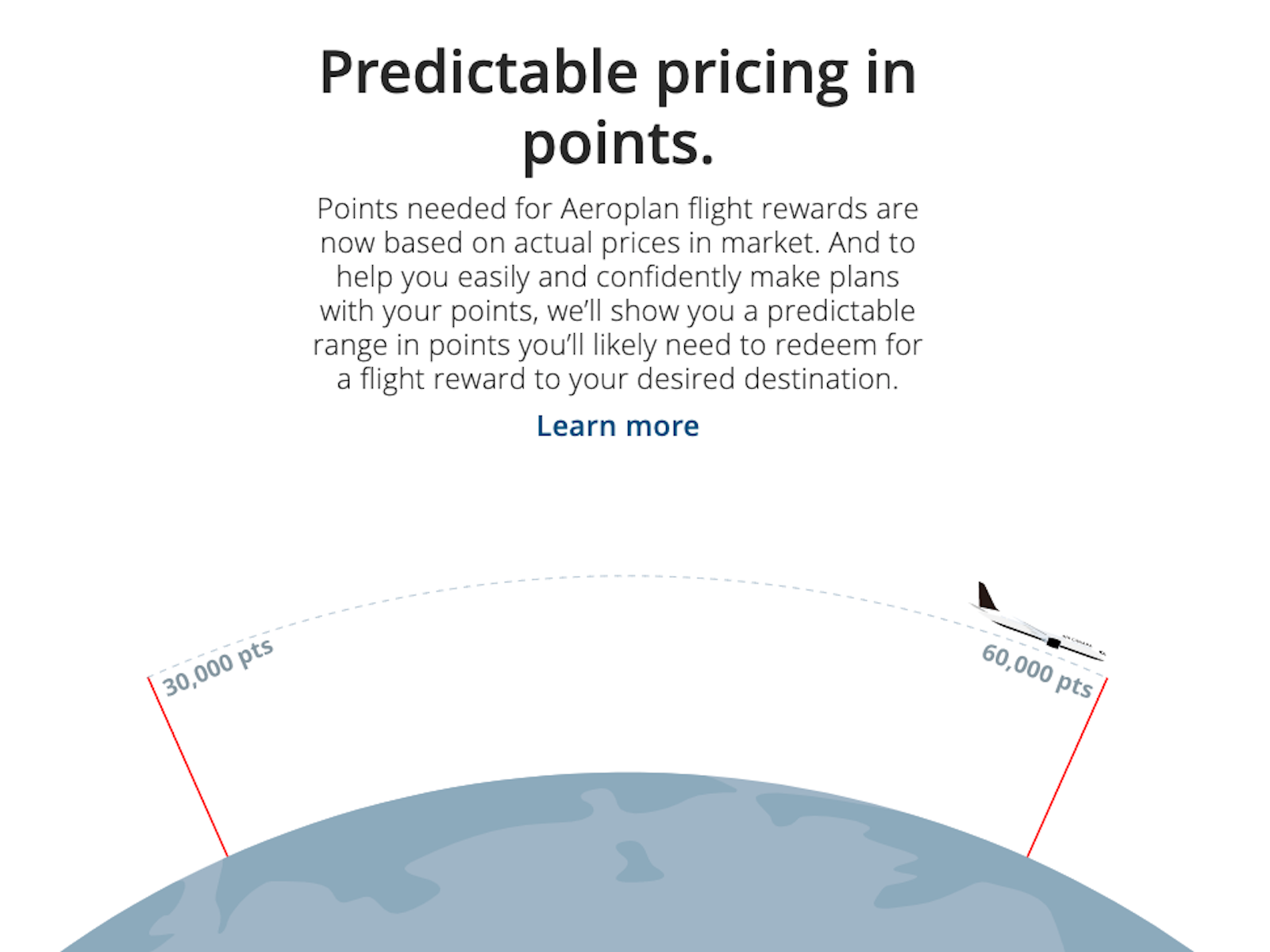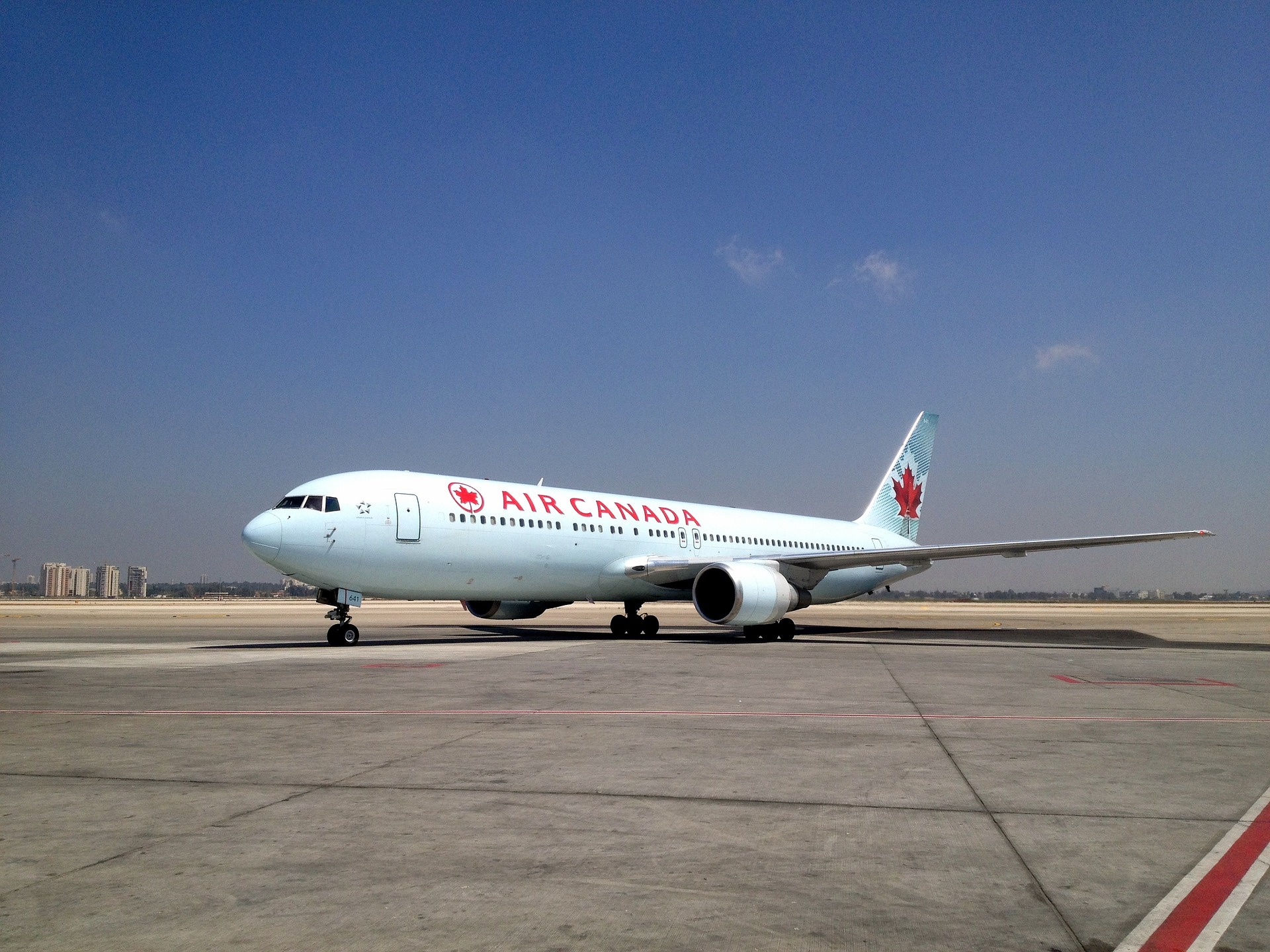
New Aeroplan Program Breakdown, There Is A Lot To Like
For the 2nd time in 2020, Air Canada announced an overhauled / practically new Aeroplan program. What are the pluses and minuses of these changes? Will we lose our miles? Are there any new gems or sweet spots in the program? Here’s a look at the new Aeroplan program and what you can expect as a consumer.
New Aeroplan Program Details
Aeroplan is the loyalty program of Air Canada, which is a Star Alliance member. Their loyalty program is a 1:1 transfer partner of American Express Membership Rewards. They’re also a 3:1 transfer partner from Marriott Bonvoy (5,000 miles bonus for every 20,000 points transferred) and a 2:1.5 transfer partner from Capital One.
Back in 2017, they announced that Air Canada would replace Aeroplan (which had been a separate company previously) by 2020. The previous plan was to launch its own award program. Now, more changes are on the horizon. The new Aeroplan program will launch November 8, 2020. Any miles currently in your program will be moved to the new program at a 1:1 ratio. With changes, there are always winners and losers. Here are the changes we can expect in the new Aeroplan program, broken down by what’s good and what’s bad. We’ll also highlight any changes to sweet spots in their award chart.
Pluses
There are several good things we can expect in the new Aeroplan program launching on November 8. I’m pretty excited about some of these. Here are the positives:
- No blackout dates or seat restrictions. This is a continuation of previous policies. If the seat is for sale with cash, you can book it with miles.
- An end to surcharges on award tickets. Previously, Aeroplan passed on carrier-imposed surcharges for award tickets on some partners. This meant hundreds of dollars on some award tickets. Those are being axed. Now, you’ll pay only government-mandated taxes.
- Share points with family. Up to 8 family members can create a points pool in the new Aeroplan program. If anyone in the pool has elite status or extra perks, everyone benefits from that.
- Use points for perks and upgrades. You can use miles to bid for seat upgrades or in-flight perks like WiFi (starting December 2020).
- Additional 6 months before points expiry. Currently, you get 12 months of inactivity before your miles expire. In the new program, you’ll get 18 months worth of life out of your Aeroplan points.
- Points + cash bookings. This is always nice when you’re a bit short on the miles & points you need for a booking. Now, you’ll have flexible ways to book.
- Increased access for those using miles / elite status. I envision this the way people with United co-branded credit cards have access to award bookings that others don’t see. The new Aeroplan program promises “deals available for points only,” as well as offering “preferred pricing – that means flight rewards for even fewer points” to people with elite status / Aeroplan credit cards.
- Ability to earn status boosts through spend. For those into airline status, Aeroplan’s new credit cards will count spending towards status earning. This isn’t a surprise, since their program will be tied to revenue. Details are forthcoming, but you will be able to spend on Aeroplan credit cards and earn toward status through it.
- Stopovers permitted on one-way awards. You can add a stopover for just 5,000 miles on a one-way award ticket.
- Open jaw routing for no extra charges. Fly A to B and then fly home from C to A. You won’t need any extra cash or miles for ‘open jaw’ flights. (but you cannot have the jaw in the middle of a one-way flight)

Minuses
It’s not all rosy, however. No program is 100% customer-friendly in its changes, so here are the negatives coming down the pipe:
- Change and cancelation fees become more complicated. While change fees may go down in many situations, cancelation fees are going up. Plus, understanding the fees is more complicated.
- Miles become points and are earned based on spending. While you previously earned Aeroplan miles based on how far you flew, you’ll now earn “points” based on how much you spent. This means you’ll earn less points by booking a cheaper fare.
- Partner award booking fee introduced. You’ll pay 39 CAD (about $30 US) to book a partner award flight, whether online or by phone.
- Goodbye free stopovers. Free stopovers on round-trip awards are gone. You can add them coming and going for 5,000 miles each, but you get 0 free stopovers now.
- Most award bookings require more points. It’s not all, but a lot of award bookings need more points now. Short distances and niche markets can remain the same or get cheaper, but a lot of awards will need more points now.
- Dynamic award pricing coming? It looks like this only applies to Air Canada’s own flights, but it seems like dynamic pricing is coming. The number of miles needed will be based on the current cash price of that ticket, which can change. They offer a predictor tool, but I won’t put a ton of stock in this. While Aeroplan claims it is committed to keeping the award chart, I don’t buy it. Here’s what we see on the Aeroplan info page:

The Unknowns
There are a few unknowns as far as details / timelines:
- Promised updates to the website for award bookings. I’ll believe it when I see it, but they’re promising an integrated website that allows for complex itineraries, redeeming elite status perks, etc. all in one place.
- New credit cards. The new Aeroplan program will also include overhauling Air Canada’s co-branded credit cards. The big unknown here is what this means for anyone outside Canada. Aeroplan says it will maintain its banking relationships. Does that mean “same partners, no expansion” or does it mean “same partners, plus expansion” in these maintained relationships?

New Sweet Spots
From the get-go, the new Aeroplan program looks very different when it comes to award bookings. Firstly, the world is now broken into 4 regions:
- North America
- South America
- Atlantic
- Pacific
There are separate charts for travel within a region or between regions. Additionally, there are separate charts for flights on Air Canada and flights on partners (multiple partners are permitted and don’t require separate charts). However, all of this leaves us with a lot of charts–up to 10 of them. Additionally, it’s now distance based when finding mileage requirements. With that said, here are some sweet spots in the new program:
Pacific Northwest to Japan
Book Seattle to Tokyo on ANA for just 55,000 miles in business class. The new math on taxes means you’ll pay about $30 more in taxes, but you’ll save 20,000 miles.
Newark to Panama
For just 25,000 miles per person, fly business class one-way from Newark to Panama City PTY on Copa.
Los Angeles to Colombia
Fly on Colombia’s Avianca one-way between its base in Bogota and Los Angeles LAX. It costs 35,000 miles for business class one-way tickets.
Europe to India & Maldives
Business class from central Europe to India or the Maldives (flights under 5,000 miles) costs 60,000 points in the new Aeroplan program. Economy is 40,000 per person. 80,000 per person for first class.
Japan to South America via North America
Link 2 trips together and save a bunch of miles. Between the northern parts of South America and Japan, you’ll need the following miles: 60,000 for economy, 90,000 for business class, and 130,000 for first class.
Remember that routing rules are more flexible, so route via North America for 2 reasons. First, you can get under 11,000 miles flown to get this cheaper price point. Additionally, you could pay 5,000 points to add a stopover at your home. Now, you’ve ended one trip at home and will pick up your connecting flight to start trip 2. You’ll save tons of miles planning strategically like this, rather than booking 2 separate trips.
Other Things To Note
It’s worth noting that flights on Air Canada itself are never cheaper than with partners when it comes to business class or first class. They can be the same, or Air Canada’s can be more expensive–never cheaper.
Additionally, short flights in economy are almost always cheaper on partners. You’ll likely need less miles to redeem on partners, especially for shorter flights, given that Air Canada flights will have a ‘range’ of points needed. Only the truly long flights become a better deal on Air Canada’s own metal. This assumes you find flights for the lowest price point in the “range” I alluded to above.

Final Thoughts On The New Aeroplan Program
Aeroplan has had a busy 2020. Earlier, they added Brazil’s Azul as an earning & redemption partner (which had previously partnered only with United). They also added Etihad as a partner, which we covered here. Not everything is rosy, but I see some positives here.
Prices for some awards will obviously go up, but routing rules allow for strategic planning to combine 2 trips into 1, saving lots of miles. Eliminating carrier surcharges is fantastic, and I’ll take the 39CAD booking fee as a trade-off (except for domestic US flights, where this is a big increase over “$5.60 taxes only”). I’m nervous about the ‘range’ of points needed for bookings, but it looks like this only applies to Air Canada flights–not partners. Air Canada seems to be telling us to book their partners and not their own flights. I’ll miss free stopovers on round-trip flights, but the new routing rules make up for this in my opinion.
Now that we’ve examined the new Aeroplan program and it’s gone live, what are your thoughts? Are you excited or bummed? Any features that really jump out at you?



Ryan said: “Over time, the “new and improved website” should hit, so then the ball will really be rolling. I’m pretty excited for this, if it matches the plan”. It has been my experience with Air Canada since it merged the old Canadian Airlines plan into Aeroplan that little Air Canada says ever “matches the plan”. There is more loss than gain here for actual business travellers and for casual flyers … m’eh.
That’s why I’m waiting to see if it actually matches the expectation. Plans and what happens aren’t always the same 🙂
I had a business class flight scheduled for November 28 until last Wednesday when it had to be cancelled. Aeroplan lived up to its word and returned the 25K miles to my account and refunded the $83 plus in fees to my credit card. I just NOW went to the “new” Aeroplan site and see that the same flight on the same day would cost 166.5K miles and $34 cash. Right, SOME improvement. Air Canada lives up to its past history – as expected!
Brian – I find this hard to believe. What route did you have that cost 25k miles and now costs 166.5k miles?
November 28 (Saturday) ex YVR at noon, YVR – YYZ One way. There ARE other flights that day for 23 to 34K miles but not the midday flight.
Wow, I see that on the site! I guess this is the part where it’s based on current cash price for AC metal flights. I was worried about that being the start of some dynamic pricing…
At least for most of the US, this is just a medium to gargantuan level devaluation with a lot of window dressing. MIA-IAH-TPE-DPS is currently 77,500 miles in business on EVA (UA first leg). With the new chart that price goes to 75,000. In economy. That’s indefensible. I always avoided airlines with sizeable YQ so at least for me that’s irrelevant. It’s not like Lufthansa is making their first class award seats available months beforehand anyway, and unless Aeroplan suddenly gains access to Swiss first class, there’s nothing good there either. Aeroplan did offer two stopovers or one stopover and an open jaw as recently as last year, so while I suppose that this is technically an improvement it’s like doubling the price of something then offering 1/3 off. Then you get to pay $39 for the privilege of booking a partner award. The elite benefits wouldn’t matter to me in any case and my wife and I don’t fly enough paid tickets to make account pooling remotely worthwhile.
I’m not saying that there are absolutely no beneficial changes to the new program, I’ simply saying that overall it’s a bad devaluation with some interesting ancillary quirks. For most people flying to or from the US or Canada this is simply bad news as it combines about the worst aspects of region awards and distance awards. It’s an Enhancement.
Christian – fair points. The real benefits come if you can maximize stopovers or routing rules to put 2 tickets into 1. For a typical booking, many will go up. A few will go down. I don’t disagree with you on those. For tickets where it’s worth booking here, I think the net “cash” after points required for taxes & fees will go down on most premium cabin awards, which is good, even with the 39CAD fee. For my travel plans and travel style, I see lots of opportunities, but I get where it doesn’t work for people who lack access to direct flights or do a lot of flights domestically in the US.
Are these bloggers paid by airlinea to write these?
How come all of them potrayed them in positive light?
Tom- No we aren’t, and I said there are good things and bad things, but they weigh toward net positive for me.
“Distance Based” should have been a huge minus, deserving its own section. For many people who can’t do a direct routing from Hub to Hub and fall within the shortest segment, award prices will effectively go up…by a lot.
The new chart will only make sense on ultra-long trips where you max out the distance band and get yourself a stop-over, to see two places at once. We’ll see when the complex routing rules get clarified.
But it’s not really “distance based” in the way that British Airways is, for example. There are still zones, and then within that distance A vs distance B. So it’s more like a hybrid, avoiding the worst excesses of truly distance-based programs that destroy your mileage balance for long flights. It’s possible to find routing like a few examples I gave where you fly nearly the maximum mileage in the band and then add a stopover for huge savings.
Correct, there will be very few, very niche sweet spots that most normal people can’t utilize because we’re not a travel blogger and don’t have all the time in the world to plan weird trips for the sake of travel.
Examples for me, who lives in middle america and wants to go to Europe or Asia:
IAH – LHR – some other european place — 4800 + miles
was 30k / 55k (coach/biz) before, now 40k/70k
IAH – SFO – NRT – 6800 miles
was 37k / 75k, now 50k / 75k – so didn’t go up on biz, but that’s the closest Asian destination for me, so it’s only worse from here
IAH – TPE – DPS 10300 miles
was 45k / 77k now 60k / 85k.
Where do I win? I don’t have time or interest in planning 2-3 trips for 2 years ahead just and lock myself into all those itineraries just to save a few 10k miles.
That’s fair. As I said, it’s not perfect. I think there are ways to come out ahead, but you’re right that it takes more work.
You cannot go from North America to South America. It breaks routing rule. This will be priced as 2 one way: NA-EU, EU-SA. So you’re paying more not less. There is nothing exciting about these changes if you’re already savvy enough to avoid airlines with high YQ. It’s a straight devaluation across the board.
Read this instead
https://princeoftravel.com/blog/new-aeroplan-minirtw/#onewaybounds
Andy – thanks for this. Everything else I’d read hadn’t shown bounding rules, so this is clearly less exciting now. There are still opportunities for good value one some stopover-themed routings, but the ‘long way around’ options I saw are out under the detailed rules. Thanks for posting.
It will be interesting to see how things play out when it makes sense to travel a couple of years from now
Over time, the “new and improved website” should hit, so then the ball will really be rolling. I’m pretty excited for this, if it matches the plan.